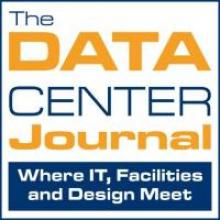
Industry Outlook is a regular Data Center Journal Q&A series that presents expert views on market trends, technologies and other issues relevant to data centers and IT.
This week, Industry Outlook asks David Woolf about Open Networking Install Environment (ONIE) technology and how it can benefit the data center. David is the Senior Engineer, Datacenter Technologies, at the University of New Hampshire InterOperability Laboratory (UNH-IOL). He has developed dozens of industry-reviewed test procedures and implementations as part of the team that has expanded the UNH-IOL into a world-class center for interoperability and conformance testing. David has also helped to organize numerous industry interoperability test events at both at the UNH-IOL facility and off-site locations. He has been an active participant in a number industry forums and committees addressing conformance and interoperability, including the SAS Plugfest Committee and SATA-IO Logo Workgroup. David has also served as cochair of the MIPI Alliance Testing Workgroup and coordinated the NVMe Integrators List and Plugfests.
Industry Outlook: What is the Open Networking Install Environment (ONIE)? What’s driving this technology?
David Woolf: The movement toward disaggregated hardware has been driven in large part by contributions to the Open Compute Project (OCP). Open designs for hardware have enabled dozens of new companies to build open hardware, design software to run on open hardware and provide solutions by integrating these items together for end users.
ONIE is one of the tools that enables this disaggregation in the network. It has been contributed to the OCP and has therefore been picked up by a number of white-box network-equipment providers.
ONIE stands for Open Networking Install Environment; it allows a network operating system (NOS) to be installed on any white-box switch hardware that supports this technology. Essentially it’s an extremely lightweight Linux implementation that is put on the mass-storage device in the switch during the manufacturing process, enabling automation of discovery and installation of a NOS image once installed on the customer network. ONIE supports installation from a variety of sources over a network using IPv4, IPv6 and tFTP, or even locally from a USB flash drive. Not only does this technology ease data center administration, it gives the end user a broader choice in software and hardware combinations.
IO: In time and profitability, how does ONIE technology benefit businesses?
DW: ONIE streamlines and automates NOS installation and updating as well as provisioning of network hardware. Normally, this task would require hours of technician time. ONIE saves time and money for data center operation. Furthermore, giving the user the ability to select hardware and software independently enables buyers to look for savings on both hardware and software purchases, and it allows them spend money on the network components that are most important to them. It thus provides an opportunity to save on capital expenditures. For example, a buyer may be able to purchase open hardware at a volume discount, then extend an existing NOS software license for less than purchasing entirely new solutions. If all the components support ONIE, a single software product can manage a variety of switching hardware.
